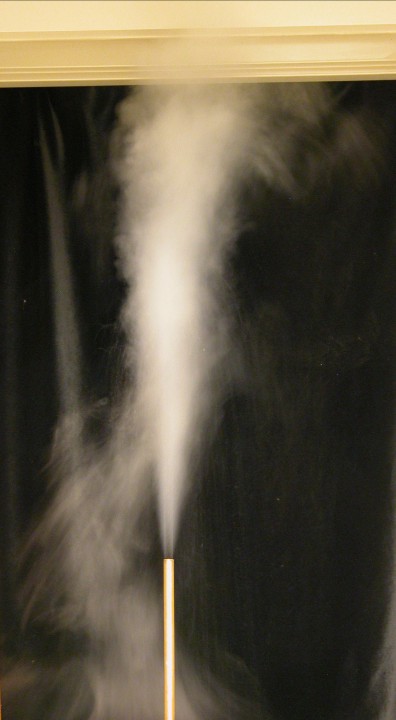Geology Demo - Liquid Nitrogen Geyser
CAUTION: Liquid nitrogen is very cold and presents a serious frostbite hazard, especially if it gets trapped against your skin (e.g.in your clothing). Additionally, gaseous nitrogen occupies more volume than the same quantity of liquid nitrogen. Gaseous nitrogen produced quickly enough in sufficient quantities can displace oxygen from the air. Containers filled with liquid nitrogen could fail without warning due to thermal shock or gas pressure. Protect yourself accordingly.
A geyser is a steam and water eruption (spring) water coming into contact with a very intense underground heat source. Certain geysers are periodic, but most of them occur in periods that vary from seconds to hours. For a geyser to occur there has to be heated rock underground, an abundant source of water, and a "plumbing" system consisting of channels in the ground that conduct water to and up away from the heated rock. Water flowing into the plumbing system is heated many degrees over its boiling point. Eventually the pressure of the heated water increases to the point that water and steam will be rapidly ejected into the air. Eventually, the plumbing system will restock itself with water and repeat the process again.
Liquid nitrogen geysers have been observed on Neptune's moon Triton (these are believed to erupt via a different mechanism than here on Earth). A small liquid nitrogen geyser can be made by placing a meter-long copper tube partially into a pool of liquid nitrogen. The tube at room temperature is inserted into the Dewar flask that contains some liquid nitrogen. Since the boiling point of liquid nitrogen is 77K and the tube is approximately room temperature (298 K), liquid nitrogen entering the tube will quickly vaporize, pushing vapor and liquid nitrogen up the tube into the air for a brief time.
Reference:
Wikipedia: Geyser. http://en.wikipedia.org/wiki/Geyser (accessed June, 2006).
BELOW: A liquid nitrogen geyser. The copper tube shown here is 120 cm long with an inner diameter of 1.4 cm.




No comments:
Post a Comment